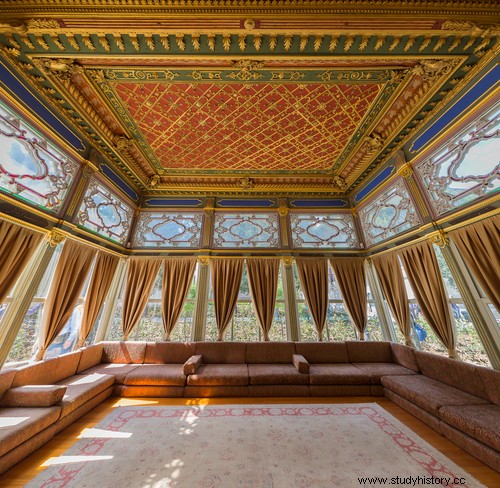
By Me. Cláudio Fernandes
It is known that the Turco-Ottoman civilization became famous in the year 1453, when promoting the siege against the center of the Byzantine Empire, the city of Constantinople. With this siege, the Ottomans, led by Sultan Mehmed II , besieged and took possession of the city. From that year, the Byzantine Empire fell under the yoke of the Ottomans, who turned all of Anatolia into extensions of their domains. Constantinople, in turn, became the base of the Turkish-Ottoman Empire and its opulence, with the construction of the palace of the caliph an example of the latter.
The then Sultan Mehmed II, after conquering Constantinople, proclaimed himself caliph, that is, sovereign of all Muslims in the world. From then on, many transformations were applied to the city of Constantinople, which even had its name changed to Istanbul. The Church of Santa Sofia (Hagia Sofia), for example, was given mosque functions (Islamic temple of prayers). On the ancient acropolis of Constantinople, Mehmed erected his new palace, which was called Topkapi.
Despite the construction of the Topkapi, which would become, properly speaking, the Ottoman palace, Sultan Mehmed II continued for a while still in the Old Palace of Constantinople, that is, in the palace built by the Byzantine emperors. In this Old Palace, Mehmed II cultivated his cycle of influences, which also housed his harem.
From 1520, another sultan, Suleiman the Magnificent, after a fire in the city, transferred the entire structure of the Old Palace to Topkapi, including the harem. It is worth noting that the caliph's palace concentrated all the power of the Muslim Empire, from which all its strength radiated. The grandeur and luxury, both inside and outside (ornaments, gardens, etc.), were part of the caliphate's demonstration of power.
The harem, for example, was also a demonstration of the caliph's power. The more wives, sex slaves (dancers, etc.) and other officials, such as the eunuchs (castrated men) in charge of managing the harem, the caliph had, the more admired he was by his subjects.
In the Topkapi palace there were still three special courtyards where women circulated, according to their direct proximity to the sultan. The eunuchs (who usually took care of the administration of the harem) had a lot of political power, being highly respected in the city, as they received the consent and trust of the sultans.
*Image Credits:Shutterstock and Cristian Pascasu
